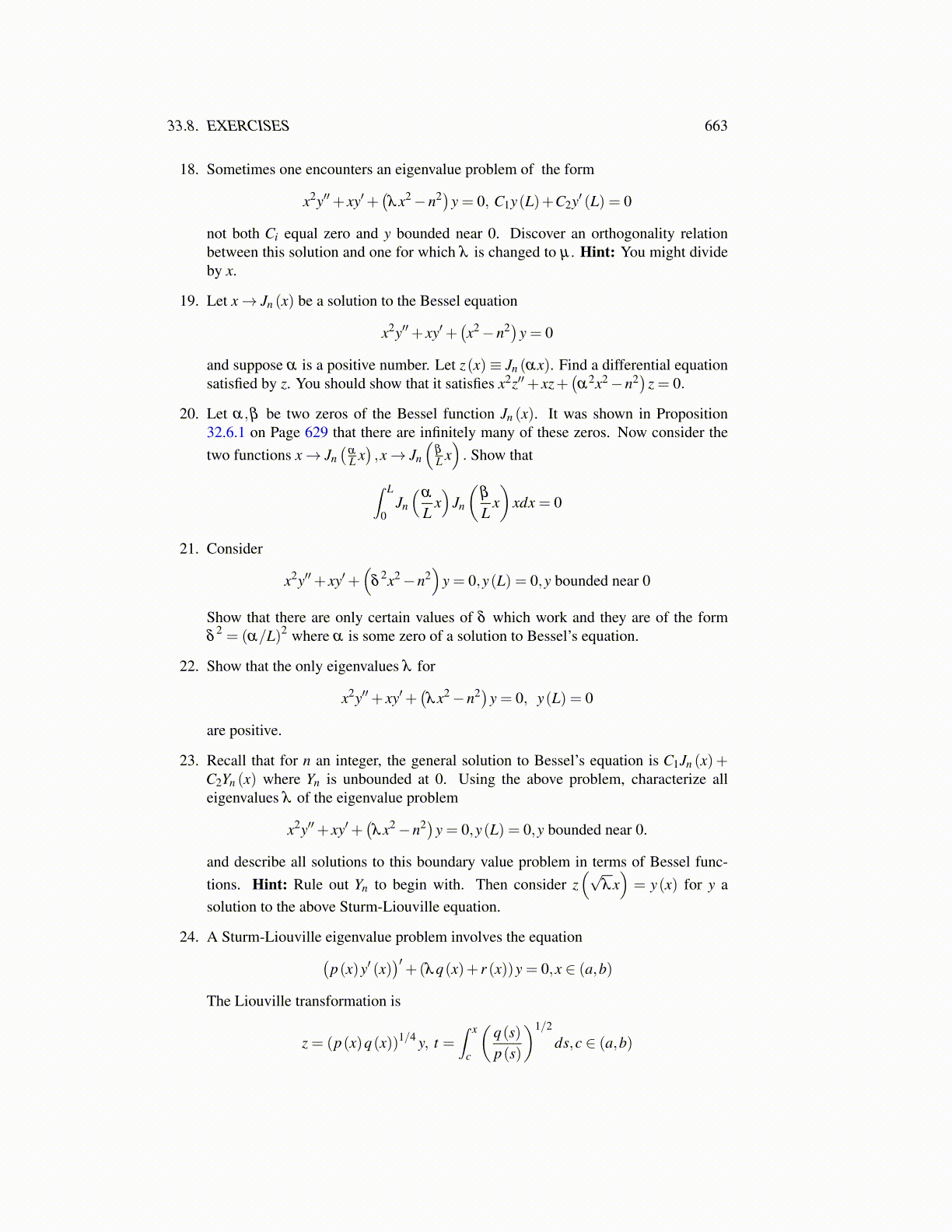
33.8. EXERCISES 663
18. Sometimes one encounters an eigenvalue problem of the form
x2y′′+ xy′+(λx2−n2)y = 0, C1y(L)+C2y′ (L) = 0
not both Ci equal zero and y bounded near 0. Discover an orthogonality relationbetween this solution and one for which λ is changed to µ . Hint: You might divideby x.
19. Let x→ Jn (x) be a solution to the Bessel equation
x2y′′+ xy′+(x2−n2)y = 0
and suppose α is a positive number. Let z(x)≡ Jn (αx). Find a differential equationsatisfied by z. You should show that it satisfies x2z′′+ xz+
(α2x2−n2
)z = 0.
20. Let α,β be two zeros of the Bessel function Jn (x). It was shown in Proposition32.6.1 on Page 629 that there are infinitely many of these zeros. Now consider thetwo functions x→ Jn
(α
L x),x→ Jn
(β
L x). Show that
∫ L
0Jn
(α
Lx)
Jn
(β
Lx)
xdx = 0
21. Consider
x2y′′+ xy′+(
δ2x2−n2
)y = 0,y(L) = 0,y bounded near 0
Show that there are only certain values of δ which work and they are of the formδ
2 = (α/L)2 where α is some zero of a solution to Bessel’s equation.
22. Show that the only eigenvalues λ for
x2y′′+ xy′+(λx2−n2)y = 0, y(L) = 0
are positive.
23. Recall that for n an integer, the general solution to Bessel’s equation is C1Jn (x)+C2Yn (x) where Yn is unbounded at 0. Using the above problem, characterize alleigenvalues λ of the eigenvalue problem
x2y′′+ xy′+(λx2−n2)y = 0,y(L) = 0,y bounded near 0.
and describe all solutions to this boundary value problem in terms of Bessel func-tions. Hint: Rule out Yn to begin with. Then consider z
(√λx)= y(x) for y a
solution to the above Sturm-Liouville equation.
24. A Sturm-Liouville eigenvalue problem involves the equation(p(x)y′ (x)
)′+(λq(x)+ r (x))y = 0,x ∈ (a,b)
The Liouville transformation is
z = (p(x)q(x))1/4 y, t =∫ x
c
(q(s)p(s)
)1/2
ds,c ∈ (a,b)